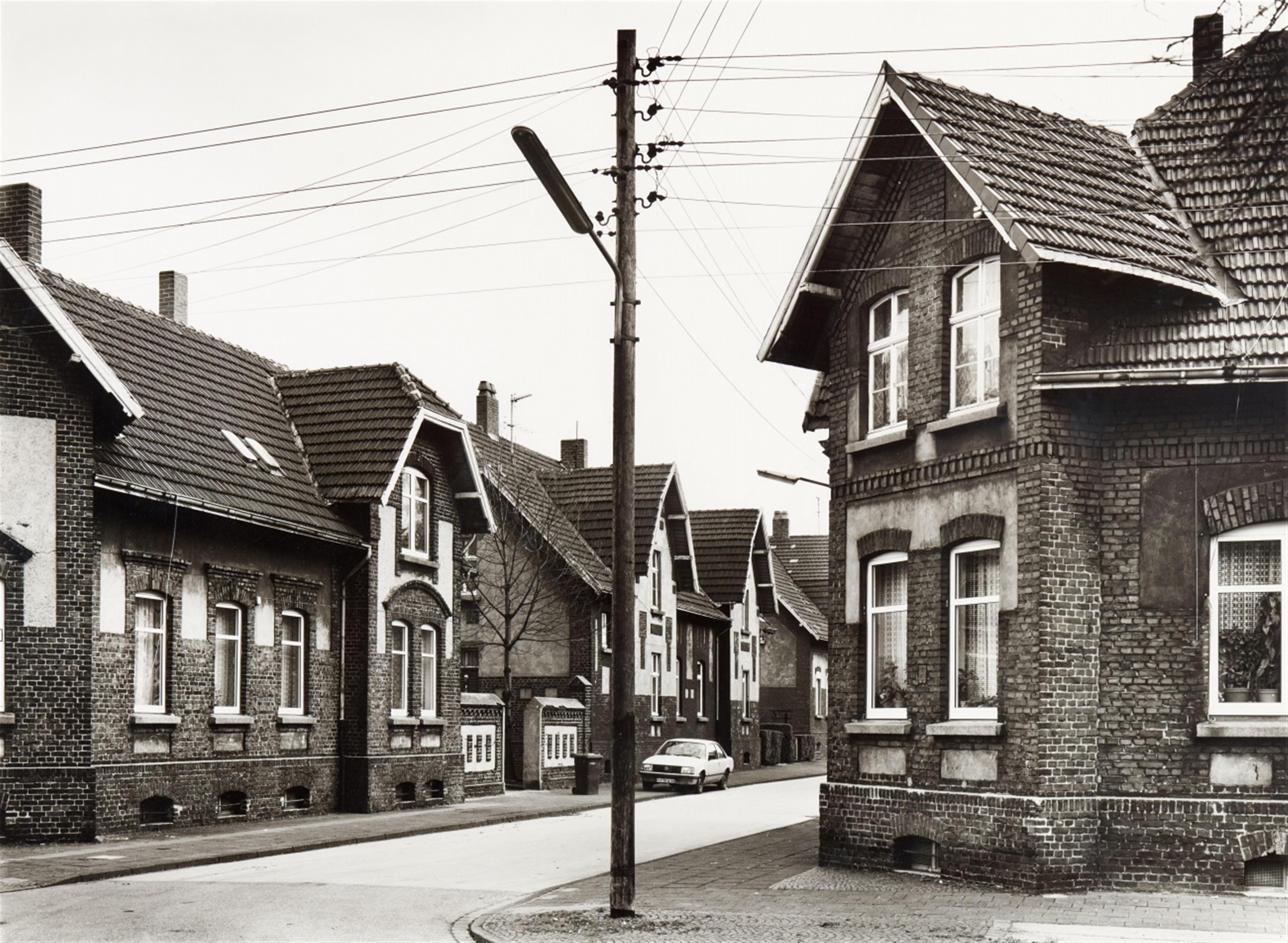Thomas Struth
Auf der Hardt, Bottrop
1985
Ferrotyped gelatin silver print. 49.2 x 67.2 cm (52.2 x 69.9 cm). Signed, dated, titled and editioned in pencil on the verso. Matted and in artist's frame, typewritten notes on the work on a artist's label affixed to the reverse of the frame. Print 8 from an edition of 10.
Thomas Struth, along with Candida Höfer, Thomas Ruff, and Axel Hütte, pertains to the first generation of the 'Becher-Schule', named after Bernd and Hilla Becher and their class for photography at Düsseldforf Kunstakademie founded in 1976. In the spirit of the Becher-Schule, Struth soon commenced systematically contemplating the topic of his choice. In his case, he was concerned with the urban outside space, the street itself with its spatial and identity-creating qualities. Proceeding from typical streets in Düsseldorf and the surrounding area, he soon extended his radius of action to other cities, limiting himself to just a few motifs per city, always in search of the one very special place most capable of expressing the character, the particularity, of the respective city. Of these places, Struth created his renowned, usually deserted, prosaically documented views.
The old colliery housing estate in Bottrop, which Struth photographed in 1985, is also such a prototypical site, a testimony to the beginnings of the urbanisation of the Ruhr area at the end of the 19th century. At the same time, it is a site with a special character, as it has a small-town, almost village-like character. In contrast to other photographs, Struth did not choose the view along the road axis from the centre of the roadway, but a diagonally oriented view into the turning of the road. This gives the photograph a less monumental effect appropriate to the small-town appearance of the subject. The photograph can be dated to the eighties by means of isolated, seemingly interspersed elements such as the car, the garbage can, the street lighting, and the electricity pylon marking the vertical central axis. Despite the remoteness of the shooting style, it is these small details - as is so often the case in Struth's early black-and-white photographs - that constitute the charm of the photographs.
Provenance
Private collection, Paris

